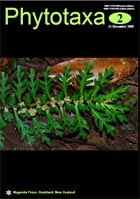Abstract
Musa textilis Née. Anales Ci. Nat. 4: 123 (1801)
Neotype (designated here): Philippines, Luzon, Sorsogon Province, Mt. Bulusan, A.D.E. Elmer 17106 (BM! 2 sheets).
The Manila hemp or abacá, Musa textilis, was described by Née (1801), with the mention that it is native to the Philippines, without providing a type. The description was however not sufficient to accurately distinguish it from other related species. In fact it appears that he intended to include all fibre producing bananas: ‘que es la única especie de Musa que da fibras útiles para tantos artefactos, me parece que deberá distinguirse de las otras, llamándola en lo sucesivo Musa textilis’ (Née, 1801: 129). The collections of Née have been deposited in Madrid (MA), some specimens are also at B, C, FI and NY (Stafleu & Cowan, 1981), but unfortunately there are no Musa specimens known in Née’s collection. It appears from the diagnosis that Née did not have an actual plant at hand or definitely in mind, making the application of the name problematic. It is currently understood that there are more than a single species of fibre producing bananas; most known is probably the Japanese fibre banana, ‘ito-bashō’, Musa balbisiana Colla (1820: 384) var. liukiuensis (Matsum.) Häkkinen in Häkkinen & Väre (2008: 91) that is widely used in the subtropical islands of Japan.

